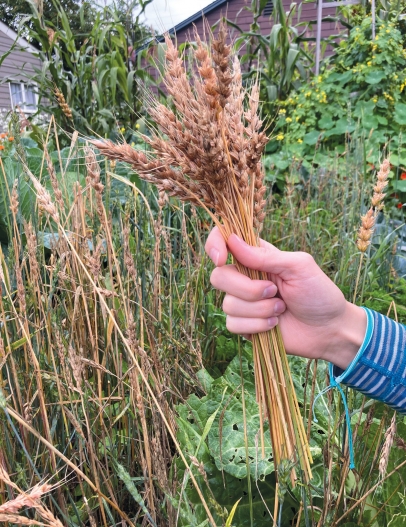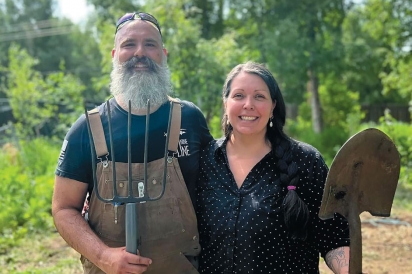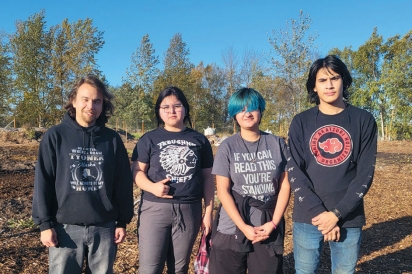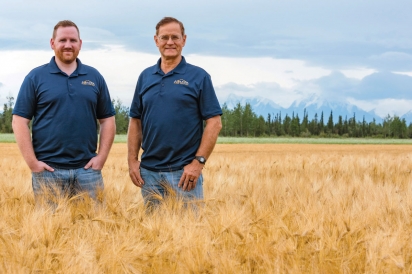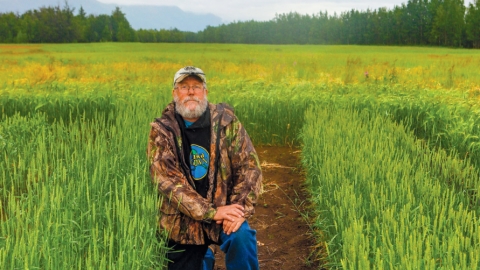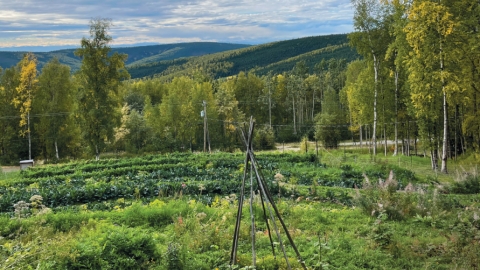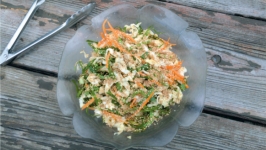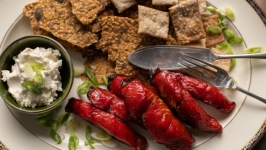Pursuing the Local Loaf
A couple years ago, I tried to grow wheat in my home garden in Anchorage. I’d spent my early 20s working as a baker, and while the bread and pastry I made were organic and artisanal, I wrestled with what it would mean for these products to be sustainable. The flour still came from thousands of miles away, like 95 percent of all the food consumed in our state. When I began to research growing grain in Alaska, I discovered that it was a common practice among early colonists, and that for several decades, there was robust, U.S. Department of Agriculture-funded research at the University of Alaska Fairbanks focused on breeding grain for subarctic conditions. These projects began to fizzle in the 1980s, when global commodities and cheap transportation began to dominate the Alaska food system. I learned that growing grain in Alaska was more limited by economics than biology, though. In fact, scientists and farmers are demonstrating that the changing climate has made conditons more favorable for growing grain in our state.
In my backyard experiment, I ended up with a scant cup of wheat berries—not enough for even a single loaf of bread—making the growing season seem much more like performance art than food production. But then again, I wasn’t trying to be efficient. I wanted to know what it would feel like to grow grain on a personal scale. As gardeners do, I wanted to build a relationship with the food I consume. And I also wanted to explore the ethics of grain agriculture in Alaska.
The Circumpolar North experiences climate change at a faster pace than the lower latitudes. In a recent study out of UAF, climate models predicted that by the end of the century, interior Alaska could look a lot like Kansas. “Climate change in Alaska presents a unique opportunity for developing local food systems,” Nancy Fresco, the lead author of the study report explained, “because it’s both an adaptive response and a mitigative measure.” Essentially, if Alaskans produce more food in a warmer climate, we also decrease dependence on oil-based transportation for our food supply, ultimately contributing less to the greenhouse gases that further exacerbate climate change.
The UAF study used the agricultural measurement, growing degree days, or GDD, to quantify the potential for future success of various crops, including grasses like barley, oats, corn, and wheat. GDD is the cumulative heat that a plant needs to become fully mature over an entire season. This metric describes how crop maturity isn’t based on season length alone, but also on the total heat available above the temperature threshold a unique plant needs to grow. For example, corn needs at least 1,134 cumulative degrees over 50 degrees to fully mature in a growing season, while hard red wheat needs 2,800 cumulative degrees over 32 degrees. This means that all the times in a growing season when the temperature is between 32 degrees and 50 degrees “count” for wheat, but are stagnant for corn. With current predictions, it could be just a few decades before sweet corn is a viable crop for interior Alaska, but conditions for cold-hardy crops, like barley and wheat, are already here.
However, there’s a big difference between possible and optimal. “Any farmer will tell you that their work is really, really risky,” Fresco admitted. She wants future studies to look at microclimates throughout the state and microsite variables in field trials to help farmers weigh risks before heavily investing in growing grain. One farmer in Delta Junction, Bryce Wrigley, has already decided it’s worth the gamble. He owns the state’s only farm and mill that produces grain for human consumption on a commercial scale. He grows sunshine hulless barley, a variety that was bred for Alaska conditions and released to the market by UAF before the breeding program was dissolved entirely in the early 2000s. All of Wrigley’s neighbors in Delta Junction grow barley for animal feed, which can be sold as a lower quality grain, making it less risky. “I switched to growing human food because I felt that I had to do something about the state’s food insecurity,” Wrigley explained. After 15 years of operating the Alaska Flour Company, Wrigley feels that the main limitation to his production isn’t the climate but finding local buyers. “There’s a huge economic and political component to all of this,” Fresco added. “That’s the hard part. These aren’t just biological questions.”
“These operations also have to feed the community first. That’s the Indigenous way. Share your wealth internally and then trade externally. If people can’t afford it, then it’s not food security.”
There are cultural and moral questions, too. Alaska’s large, intact landscapes host ecosystems that are critical for global carbon storage, biodiversity, and the subsistence way of life for many Indigenous people. It’s hard to imagine a more dystopian scene than tundra that supports the world’s largest caribou migrations being tilled into amber waves of grain. But agriculture isn’t inherently colonial. Alaska Native cultures have long modified their natural environment to meet the needs of their communities—a practice explained to me by Tikaan Galbreath, then-technical assistant specialist at the Intertribal Agriculture Council. This practice is reverently called “cultivating abundance,” and has metaphorical and physical ties to modern agriculture. There’s also traditional ecological knowledge, called “Indigenous common sense” by Steven Holley, a project manager at Alaska Village Initiatives. “Basically, it’s the wisdom that a community must provide as much for future generations as it does for the current generation.” This makes Indigeneity inherently adaptive. Meda DeWitt, a Tlingit ethno-herbalist, further explained that this Indigenous adaptivity can sometimes involve “intentional migration” of plants, even of crops like wheat, oats, and hemp. But to maintain the Indigenous way, agricultural practices must be reciprocal, rather than extractive, in relationship to the land.
Grain agriculture is notoriously practiced as a high-input monoculture across the Lower 48, but many Alaska farmers are already implementing practices that center on environmental and social sustainability. Wrigley, for example, stopped tilling his barley fields over ten years ago and is currently integrating cover crops, which return nitrogen to soil, into his annual crop rotations. DeWitt further suggested that future grain farmers could focus on lands that are already degraded, like areas burned by wildfires or polluted by past military operations. The remediation phase would be a way to get in a right relationship to the land and allow cultivation to expand without further disruption. “These operations also have to feed the community first. That’s the Indigenous way. Share your wealth internally and then trade externally,” DeWitt continued. “If people can’t afford it, then it’s not food security.”
Overall, everyone I spoke to for this article agreed that there’s a vast need for formal systems of transparent communication between tribes, government, and the private sector when it comes to agricultural land development in Alaska. This was exemplified by the state’s agricultural land sales in Nenana last year, which was met with protests from local tribal members who have traditional, subsistence traplines in the area. In the end, tribal members organized, purchased two of the 27 lots that were sold, and continue to meet with state agencies to advise and advocate for how these lands should be developed. In 2023, each purchaser will have to submit a lot development plan to the state before they can begin making changes in the area. I hope that the state ensures these plans align with the values of scientists, Indigenous leaders, and farmers—that the conversion of wild lands to agricultural lands is handled with care.
For now, the scale of agriculture in the state is relatively tiny and the need for food security is great. “At this point, there would have to be a tremendously huge shift to cause ecosystem fragmentation,” Fresco concluded. “Like if the whole bread basket of America shifted to Alaska, that’d obviously be very problematic.” While I love bread, which means I love grain, I also love Alaska. I certainly worry about how we will nurture these relationships as the land changes and I recognize that the consideration of grain agriculture in Alaska is technically and ethically complicated. Thankfully, Alaska’s Indigenous cultures are built upon reverence for the land and the wisdom that these relationships bring. When it comes to our daily bread, I believe wisdom is what we need.
This story originally appeared in Issue No. 29, Fall 2023


